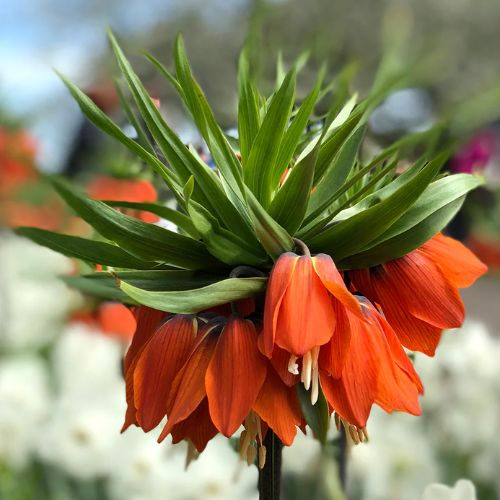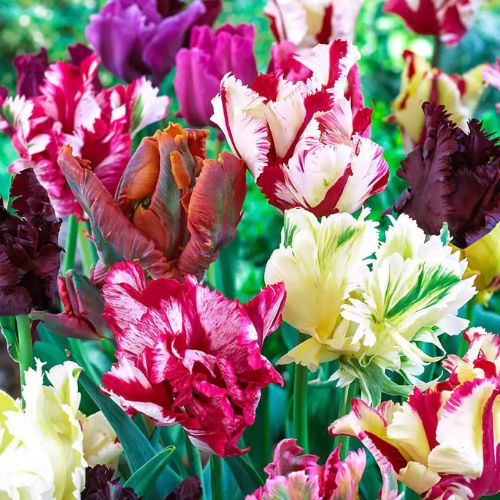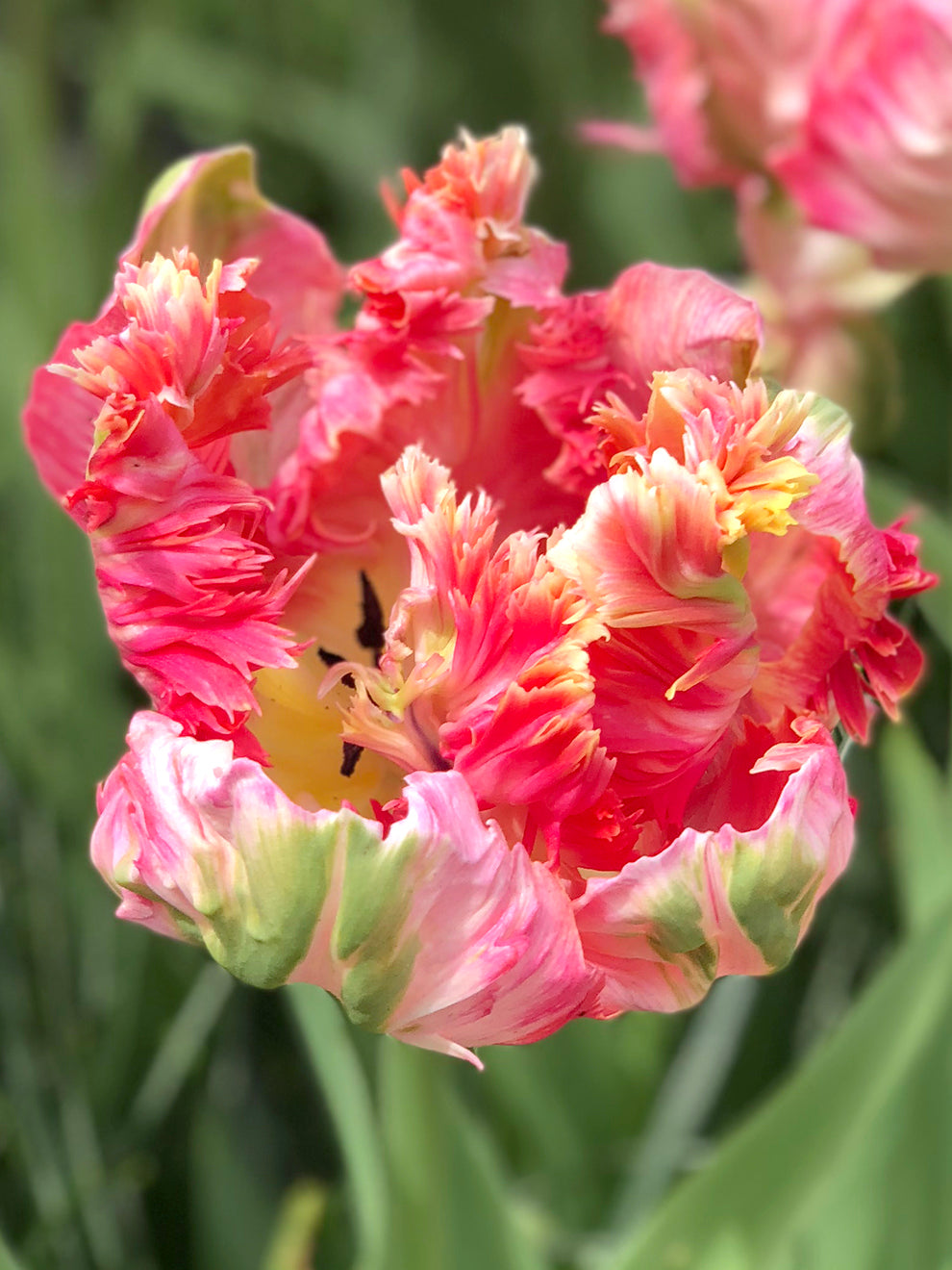Best high-impact bulbs – 8 impressive specimens to plant now for showstopping flowers in 2025
Plant these bold and beautiful bulbs now to ensure your garden is brimming with mesmerizing color next year

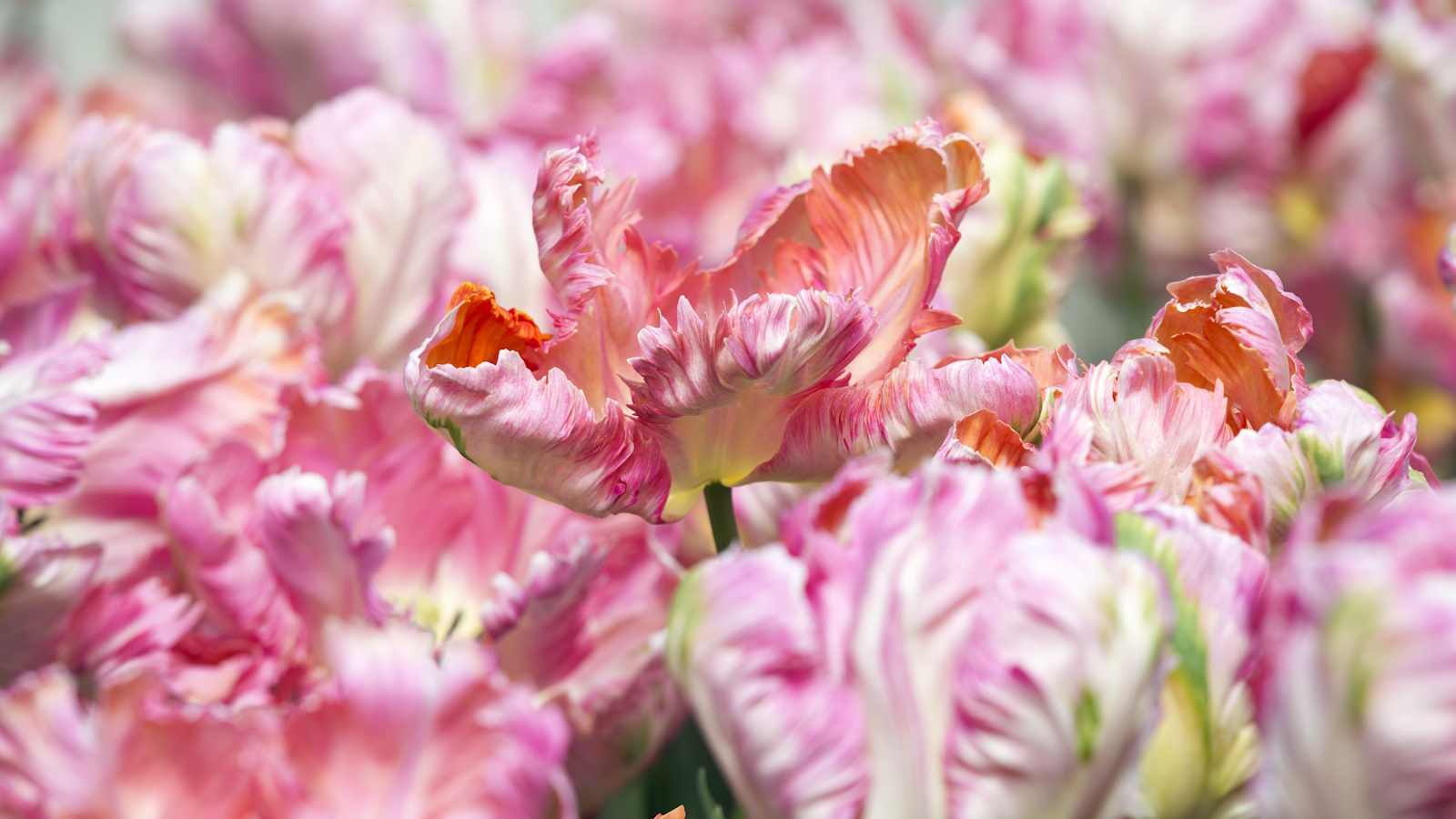
Have you thought about how to make your garden truly stand out next year? Now is the perfect time to plant bulbs that will deliver a breathtaking display in 2025. To create a real statement garden design, consider bold, high-impact bulbs that promise towering blooms or vibrant, striking colors to impress.
These bulbs aren’t just beautiful - they’re dramatic, bold, and designed to transform your garden with their size, structure, and intense color. Why settle for subtle when you can make your garden a true showstopper?
We’ve curated eight of the best high-impact spring bulbs that will bring unique beauty and flair to your space. Plant them this fall, and by next year, your garden will be brimming with unforgettable blooms.
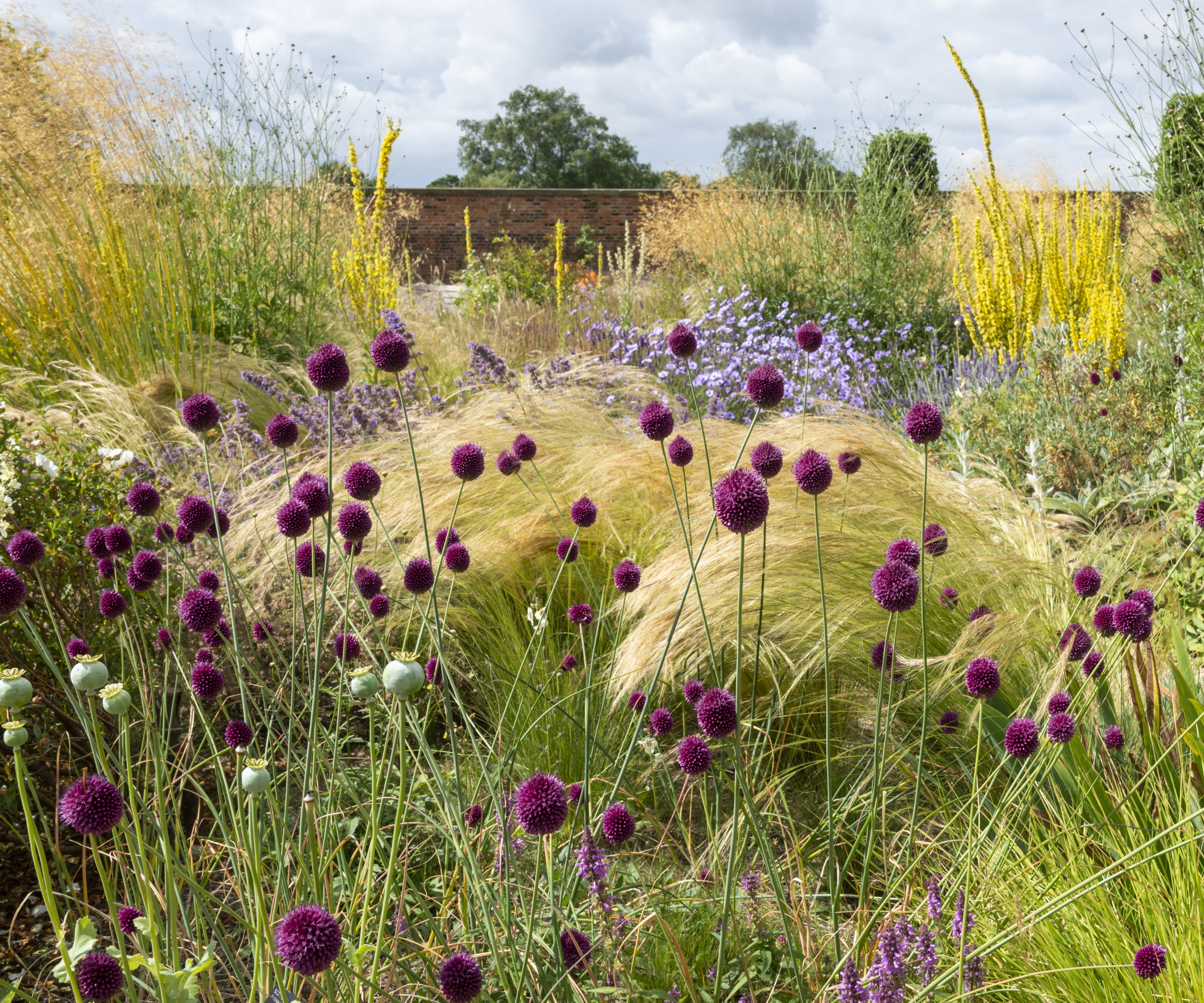
Best High-Impact Bulbs for 2025
If you want to make a statement with your choice of bulbs, you should look for varieties that provide height, texture, and vibrant blooms to ensure your garden makes an impact from early spring through to summer.
Whether you want to introduce vertical drama, eye-catching shapes, or an unexpected splash of color, these high-impact bulbs are perfect for designing a garden that will leave a lasting impression in 2025.
1. Fritillaria imperialis (Crown Imperial)
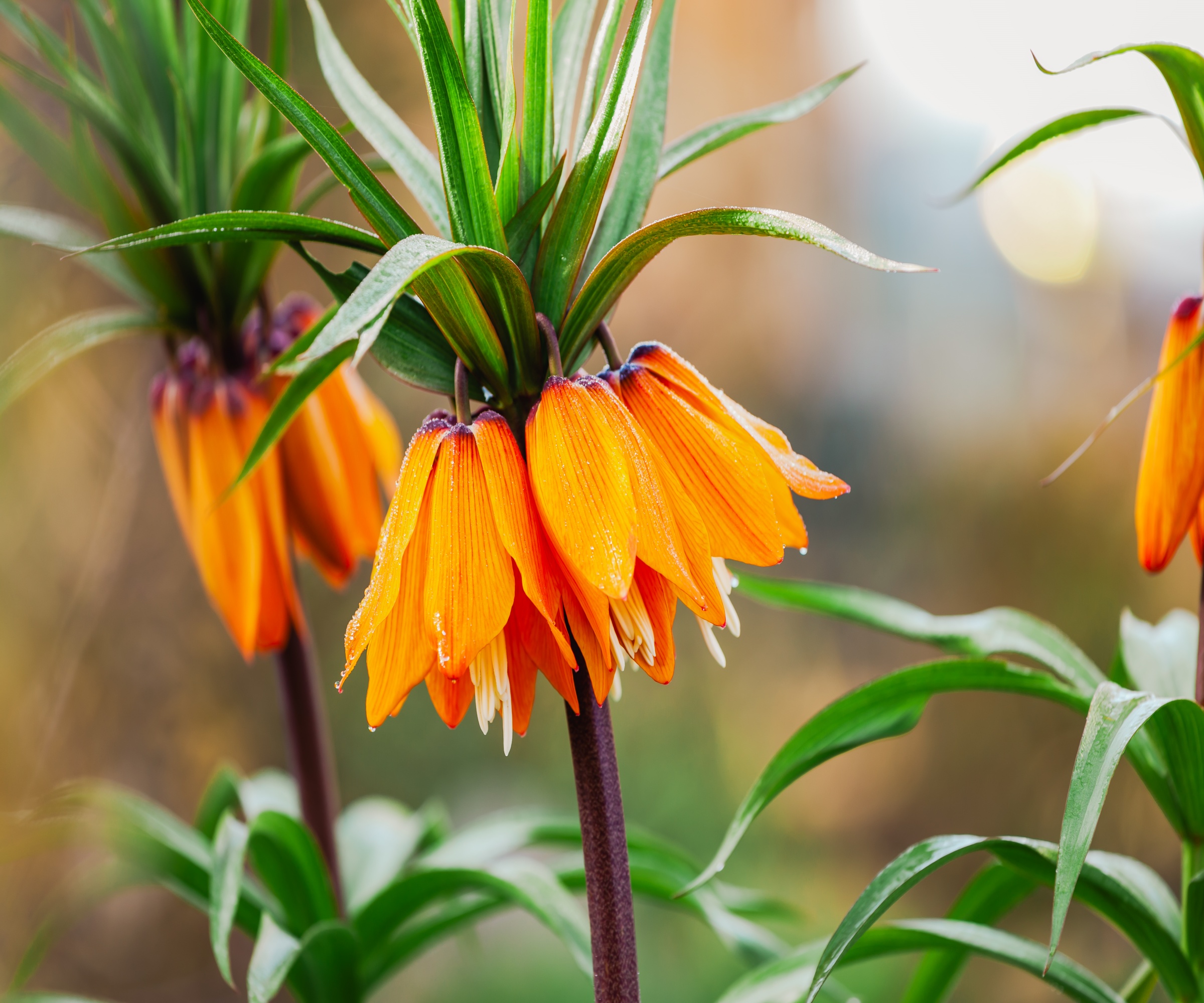
Latin Name: Fritillaria imperialis
Other names: Crown Imperial
USDA hardiness zones 5-8
Fritillaria imperialis is a real showstopper. These tall plants are sure to add grandeur to any garden, reaching heights of up to 4 feet tall with bold, bell-shaped flowers in vivid orange or yellow hues. Its blooms dangle from the top of sturdy stems, creating a striking contrast against its dark green foliage, and each flower cluster is topped with a crown of green leafy bracts, adding to its regal appearance.
Design expertise in your inbox – from inspiring decorating ideas and beautiful celebrity homes to practical gardening advice and shopping round-ups.
Plant imperial fritillaries 6-8 inches deep in the fall, ensuring they are placed on their sides to prevent water from collecting and causing rot. These towering beauties are best planted in groups for a more dramatic effect when they flower in 2025, and they will thrive in full sun and well-drained soil.
Fritillaria imperialis is a great addition to garden borders and they look fantastic when planted at the back of flower beds, where their unique height can truly stand out. These plants are also fairly deer-resistant, making them perfect for gardens in areas with wildlife.
Once mature, Fritillaria imperialis prefers consistent moisture but cannot tolerate soggy soil. Pair them with other tall, bold perennials like alliums or ornamental grasses to create privacy and make an architectural statement in the garden.
2. Allium Purple Sensation
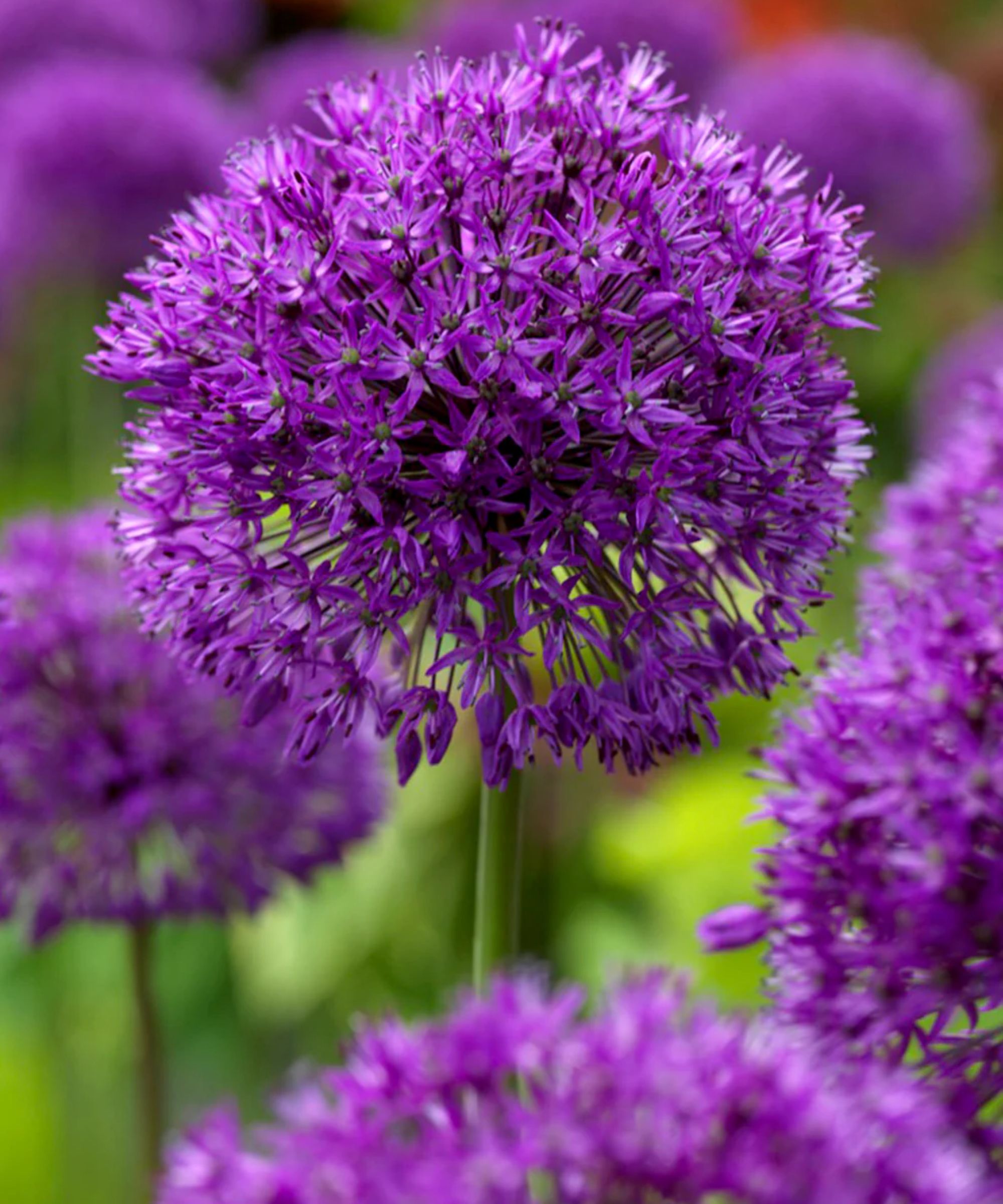
Latin Name: Allium hollandicum 'Purple Sensation'
Other names: Ornamental onion
USDA hardiness zones 4-8
With its vivid, spherical purple flower heads, Allium 'Purple Sensation' is one of the best varieties of allium bulb to plant now if you want to add drama and height to your garden in 2025.
'Alliums are showier cousins to onions and garlic, and they delight in late spring with their showy, spherical purple and white flower-heads,' says Amy Yarger, senior director of horticulture at Butterfly Pavilion. In full bloom, Allium 'Purple Sensation' rises up to 3 feet tall and its long-lasting blooms attract pollinators like bees and butterflies, making them a favorite for wildlife gardens.
Plant 'Purple Sensation' bulbs 6-8 inches deep in the fall in well-drained soil and ensure they receive full sun to partial shade for the best results. These alliums naturalize well, so you may also want to plant them in groups for a more impactful look in 2025.
Once established, these alliums are drought-tolerant and require little care. Pair them with bearded irises (see below), tulips, or ornamental grasses to create a well-balanced design in borders or mixed beds.
You can purchase Purple Sensation Alliums bulbs from Dutch Grown.

Amy has been with Butterfly Pavilion since May of 2000 and currently leads Butterfly Pavilion’s local pollinator habitat initiatives. Amy has installed pollinator habitat gardens throughout her local community and is an expert on biodiversity.
3. Bearded Iris
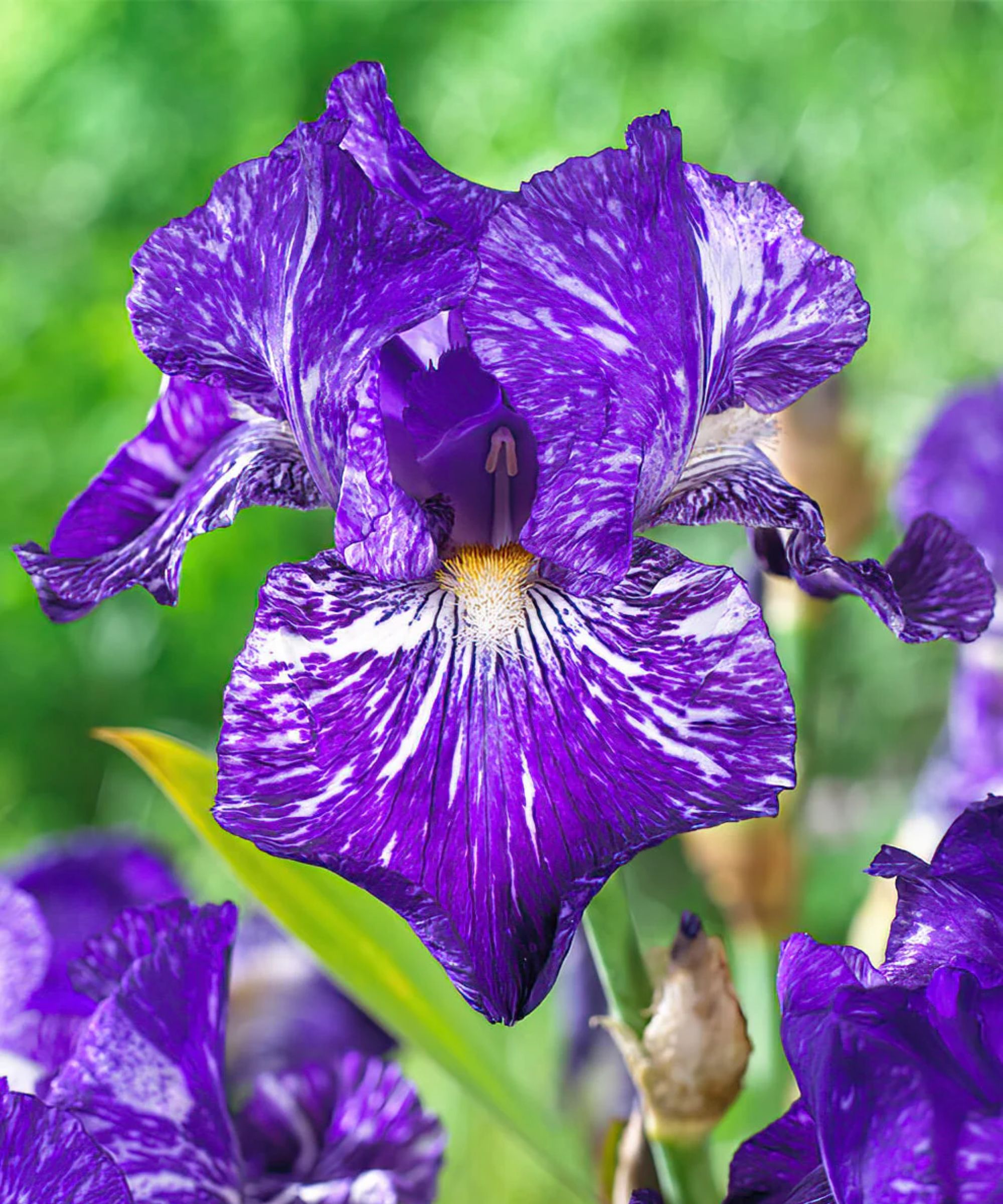
Latin Name: Iris germanica
Other names: Bearded flag, German Iris
USDA hardiness zones 3-9
When in full bloom, Bearded irises offer bold, ruffled petals that come in a vast range of colors, from soft pastels to deep jewelled tones. These striking flowers grow atop tall, sturdy stems, and will add height and elegance to borders and mixed plantings. Their distinct beards add texture to their petals, making them a favorite among professional gardeners.
'Bearded irises are a wonderful way to introduce structure and height to your garden,' says Rachel Bull, Head of Gardens at Home & Gardens. 'Their wide range of colors means you can find the perfect variety to complement your existing garden scheme, and they make excellent cut flowers.'
Plant rhizomes in the fall, making sure the tops are just above the soil surface to prevent rot. Bearded Irises prefer well-drained soil and full sun, and you should space them about 12 inches apart to allow for growth.
These irises thrive in full sun and can tolerate a wide range of soil types, provided the soil is well-drained. Once mature, Bearded Irises are drought-tolerant and require minimal watering. Pair them with alliums or peonies for a layered garden design that showcases a variety of textures and colors.
You can purchase the vibrant bearded irises pictured above from Dutch Grown.

Rachel Bull is Head of Gardens at Homes & Gardens, a gardening writer, flower grower, and floral designer with 15 years of experience. She specializes in sustainable gardening, wild planting, and has created floral installations at iconic venues like Kew Gardens and the Barbican.
4. Foxtail Lilies

Latin Name: Eremurus robustus
Other names: Desert candles
USDA hardiness zones 5-8
Foxtail lilies are towering, eye-catching plants that are guaranteed to add bold vertical interest to late spring and early summer gardens. These stunning flowers can reach impressive heights of up to 8 feet, with long spikes of star-shaped flowers that bloom from late May to early June, and erupt with shades of gold, orange, apricot, and pink.
'These bulbs are some of the showiest of all the bulbs listed here,' says Amy Yarger from Butterfly Pavillion. 'In late spring, their shape and height make them look like exclamation points in the garden, a great example of a garden showstopper.'
'Bees avidly visit the flowers to collect pollen and nectar,' adds Amy, which makes foxtail lilies an essential bulb to plant this year if you want to attract bees to your garden in 2025.
These tuberous bulbs require a wide planting hole about 3 inches deep to accommodate their sprawling roots. Be sure to plant them in well-draining, organically rich soil in a sunny location, as they thrive in bright, dry conditions. Amy adds, 'They do not live long in soggy areas or if there is regular disturbance to the planting bed.'
If you want to add vertical drama to your borders, you can't go wrong pairing these bulbs with other tall perennials like ornamental grasses or alliums. You can purchase foxtail lily bulbs from Walmart.
5. Parrot Tulips

Latin Name: Tulipa gesneriana
Other names: Ruffled tulips
USDA hardiness zones 4-7
When it comes to selecting high -impact bulbs for 2025, few flowers can beat the flamboyant, frilled petals of parrot tulips. This dramatic type of tulip features large, feathered blooms in a vibrant range of colors, from rich reds to sunny yellows, and even multi-colored varieties.
'Tulips do best when planted in October. In colder climates, for USDA hardiness zones 4-6, it’s best to plant them a few weeks earlier,' advises Tammy Sons, CEO of TN Nursery.
Parrot tulips will thrive in full sun, requiring at least six hours of midday sunlight to reach their full potential. They also prefer well-drained soil with a neutral pH level, and should be planted about six inches deep.
Parrot tulips perform best when planted in groups for a fuller, more dramatic display. Once in bloom, try to protect then from strong winds, as their large, frilly petals can be delicate. Pair them with other late-blooming perennials or use them as focal points in containers for maximum impact.
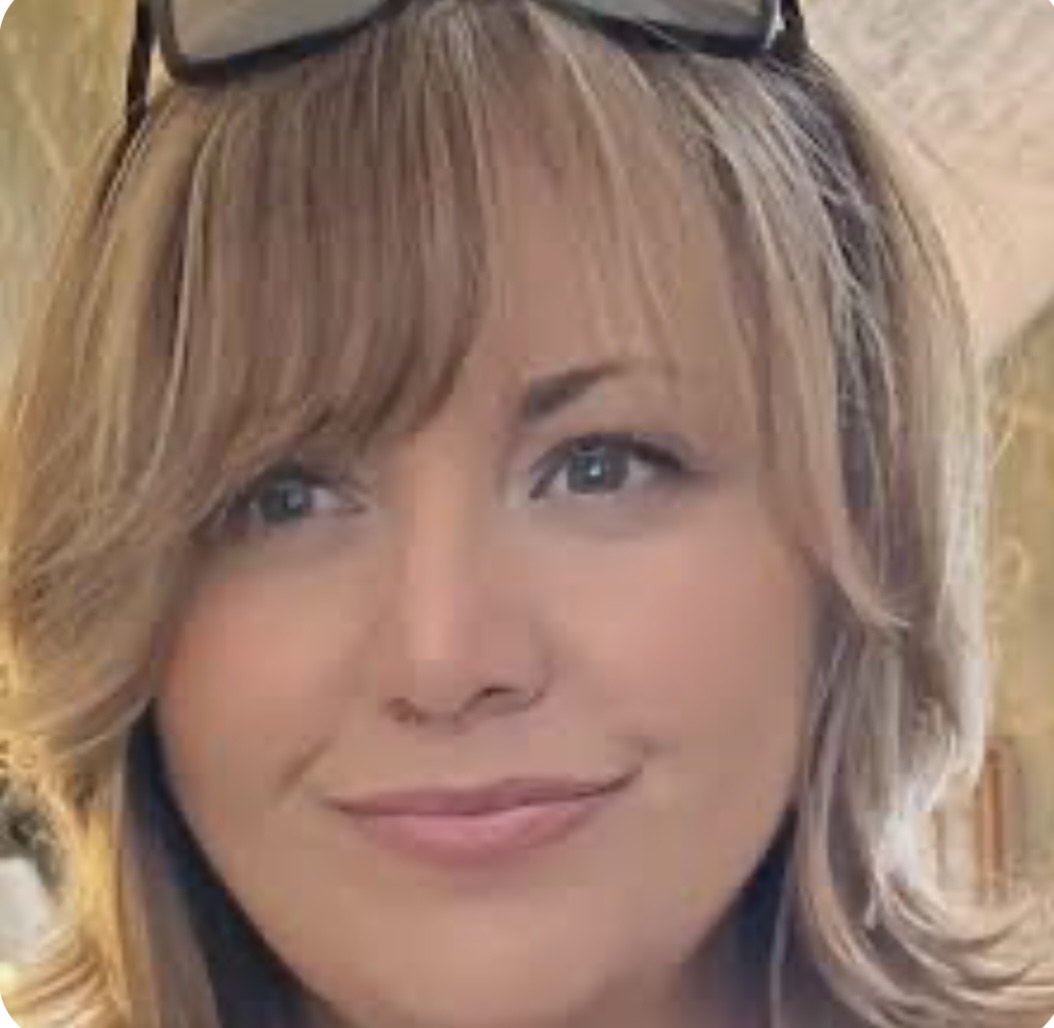
Tammy Sons is the Founder and CEO of TN Nursery. With decades of experience in horticulture, she specializes in native plants and sustainable gardening practices, making her an excellent resource for selecting bulbs.
6. Allium 'Giant Schubertii'
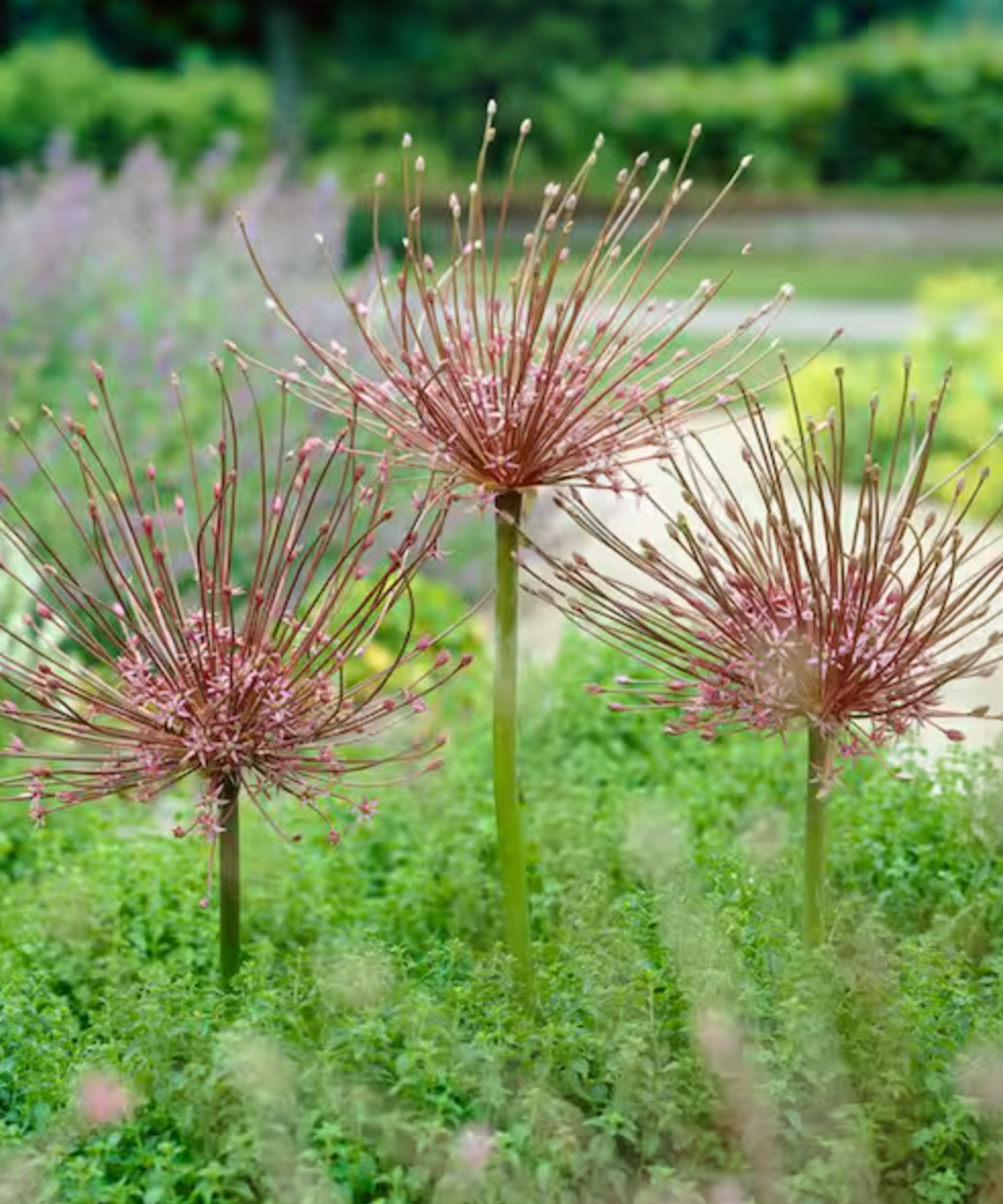
Giant Schubertii bulbs available at Home Depot.
Latin Name: Allium schubertii
Other names: Starburst allium
USDA hardiness zones 5-8
Allium 'Giant Schubertii' is one of the most high-impact bulbs you can plant, thanks to its dramatic starburst flower heads that can span up to 12 inches across. These impressive florets radiate outwards, giving these alliums a firework-like appearance.
Plant these bulbs 6-8 inches deep in full sun and well-drained soil during the fall for a an eye-catching display in 2025. If you really want to push the envelope and create more dramatic impact, plant them in clusters or alongside other varieties of allium.
'Giant Schubertii' is one of my favorite alliums for adding bold structure to a garden scheme,' says Rachel Bull. 'Its large, dramatic flower heads create a wonderful contrast with more traditional blooms, and the seed heads will remain attractive well into the summer months.'
Allium 'Giant Schubertii' prefers sunny, well-drained spots in the garden, making it a good fit for borders and mixed beds where its size can be showcased. Once mature, these plants are drought-tolerant and work beautifully when paired with irises for a bold-yet-well-balanced scheme.
You can purchase the Giant Schubertii pictured above at Home Depot.
7. Camassia leichtlinii

Latin Name: Camassia leichtlinii
Other Names: Camas, Quamash
USDA Hardiness Zones 3-8
'Another native option is Camassia, or camas lily, which grows well in wet meadows and moist gardens,' says Tammy Sons, CEO of TN Nursery. In its maturity, Camassia produces tall spires of star-shaped flowers in beautiful shades of blue, purple, or white, reaching heights of 3-4 feet.
These eye-catching blooms are densely packed along sturdy stems, adding a striking vertical element to borders and naturalized garden areas. Their late-spring bloom time makes them ideal for extending the flowering season just as earlier bulbs are waning.
Tammy recommends planting Camassia bulbs in the fall, around 4-6 inches deep and spaced 6-8 inches apart, in well-drained soil. Because these plants naturalize well, you may wish to plant them in groups for a more impactful display.
These bulbs tolerate damp soil better than most, making them suitable for areas with poor drainage. They are especially well-suited to naturalistic or meadow-style gardens. They are also an excellent choice for areas that receive seasonal moisture, such as near ponds or rain gardens. Once established, Camassia is relatively low-maintenance and will pair beautifully with other tall perennials like foxgloves or grasses.
8. Hyacinth 'Woodstock'

Latin Name: Hyacinthus orientalis 'Woodstock'
Other Names: Hyacinth
USDA Hardiness Zones 3-9
Though compact in size, Hyacinth 'Woodstock' feature dense upright spikes of velvety, deep purple flowers, that add a rich, moody tone to borders and containers. These beautiful blooms also release a sweet, heady fragrance in springtime, making them perfect for scented borders.
Plant hyacinth bulbs in groups of 5 or more, 4-6 inches deep during the fall, in well-drained soil. These bulbs will produce create a dense burst of color and fragrance in 2025.
Hyacinths thrive in full sun to partial shade and are well-suited to rock gardens, borders, or patio containers where their fragrance can be enjoyed. Pair them with tulips or early-blooming perennials like primroses for a layered, colorful spring display.
To really ramp up your bulb efforts, you may also want to try these unusual bulbs to plant in fall. These rarely seen varieties are all easy to grow and will add unique charm to your garden, making them well worth the effort.
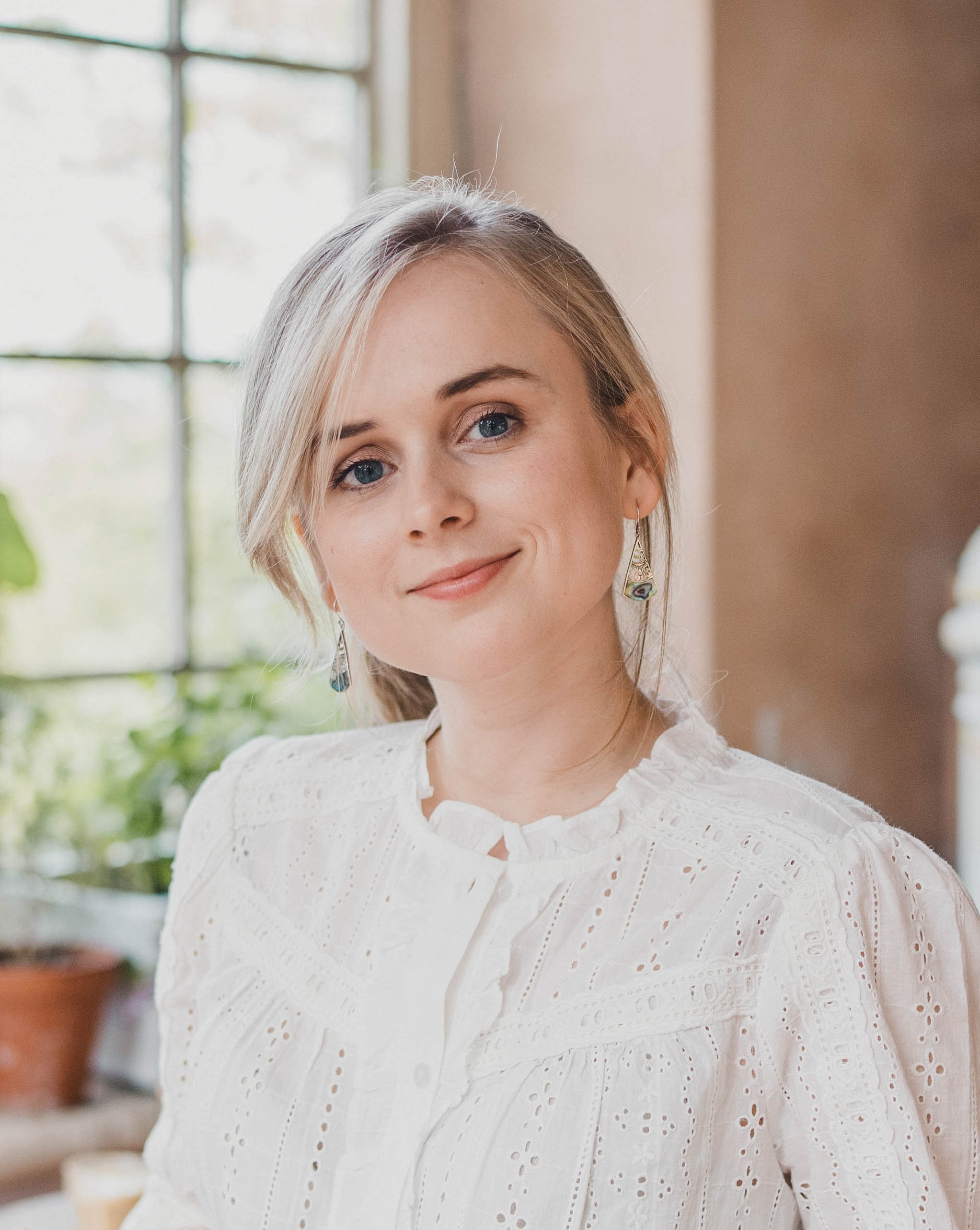
Gabriella is a freelance contributor for Homes & Gardens. She is a DIY enthusiast and a lover of all things interior design, often found antiquing or browsing the aisles of her local hardware store. She has a particular passion for historic buildings and is in the process of renovating a Victorian coachhouse in the countryside.
For much of the past decade, Gabriella has worked as a freelance writer, crafting copy for national publications and renowned homeware brands. Most recently, she worked for Homebuilding & Renovating Magazine and is the former Head of Solved at Homes & Gardens, focusing on case studies for the magazine and website, as well as writing features about issues surrounding historic and listed building projects.
